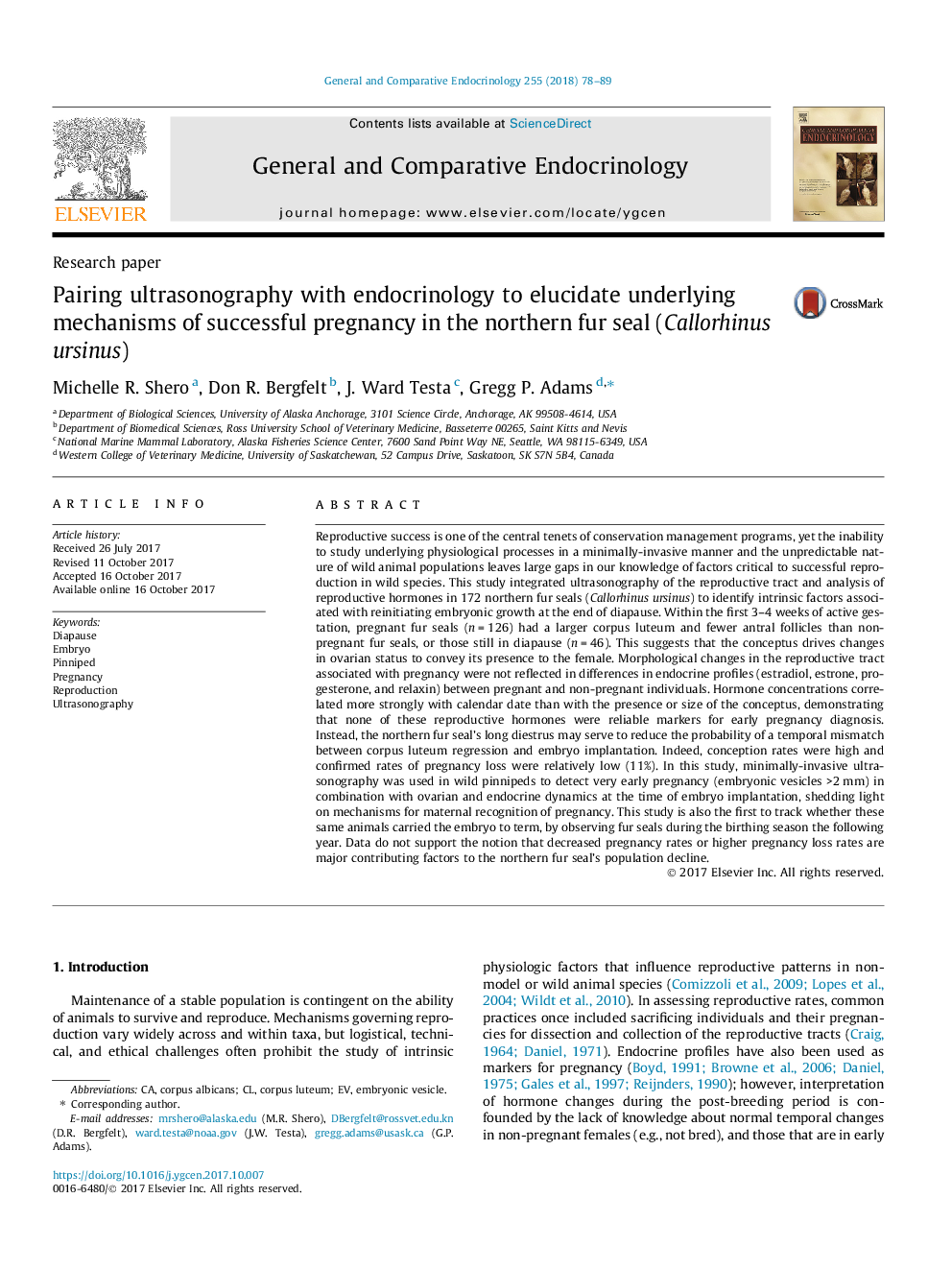| Article ID | Journal | Published Year | Pages | File Type |
|---|---|---|---|---|
| 8631439 | General and Comparative Endocrinology | 2018 | 12 Pages |
Abstract
Reproductive success is one of the central tenets of conservation management programs, yet the inability to study underlying physiological processes in a minimally-invasive manner and the unpredictable nature of wild animal populations leaves large gaps in our knowledge of factors critical to successful reproduction in wild species. This study integrated ultrasonography of the reproductive tract and analysis of reproductive hormones in 172 northern fur seals (Callorhinus ursinus) to identify intrinsic factors associated with reinitiating embryonic growth at the end of diapause. Within the first 3-4â¯weeks of active gestation, pregnant fur seals (nâ¯=â¯126) had a larger corpus luteum and fewer antral follicles than non-pregnant fur seals, or those still in diapause (nâ¯=â¯46). This suggests that the conceptus drives changes in ovarian status to convey its presence to the female. Morphological changes in the reproductive tract associated with pregnancy were not reflected in differences in endocrine profiles (estradiol, estrone, progesterone, and relaxin) between pregnant and non-pregnant individuals. Hormone concentrations correlated more strongly with calendar date than with the presence or size of the conceptus, demonstrating that none of these reproductive hormones were reliable markers for early pregnancy diagnosis. Instead, the northern fur seal's long diestrus may serve to reduce the probability of a temporal mismatch between corpus luteum regression and embryo implantation. Indeed, conception rates were high and confirmed rates of pregnancy loss were relatively low (11%). In this study, minimally-invasive ultrasonography was used in wild pinnipeds to detect very early pregnancy (embryonic vesicles >2â¯mm) in combination with ovarian and endocrine dynamics at the time of embryo implantation, shedding light on mechanisms for maternal recognition of pregnancy. This study is also the first to track whether these same animals carried the embryo to term, by observing fur seals during the birthing season the following year. Data do not support the notion that decreased pregnancy rates or higher pregnancy loss rates are major contributing factors to the northern fur seal's population decline.
Related Topics
Life Sciences
Biochemistry, Genetics and Molecular Biology
Endocrinology
Authors
Michelle R. Shero, Don R. Bergfelt, J. Ward Testa, Gregg P. Adams,
